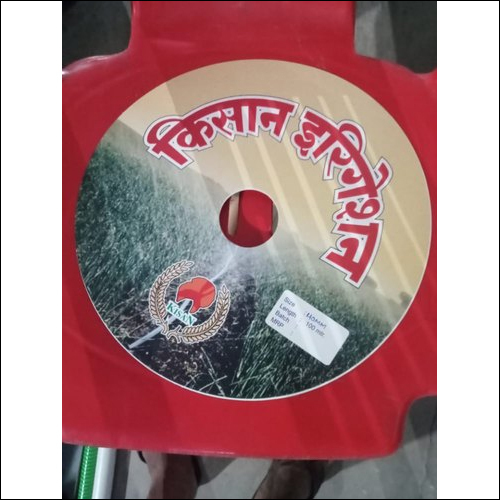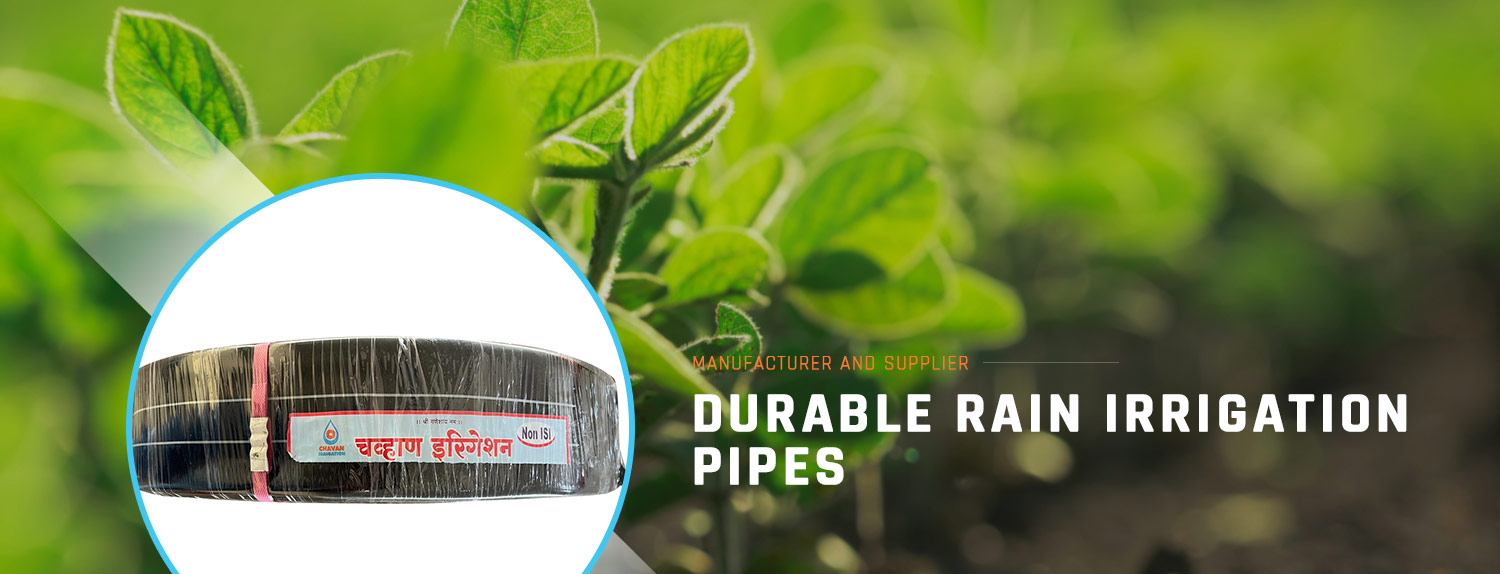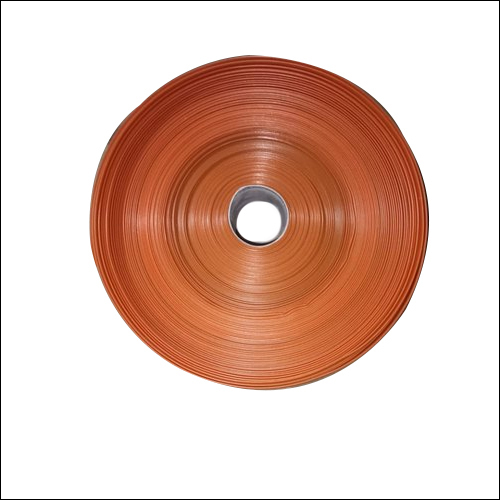Call Us : +919146594099


Rain Pipe(40Mm)(Single Layer Black Colour)
550 INR/Piece
Product Details:
- Product Type Rain Pipe
- Material Plastic
- Shape Round
- Click to view more
X
Rain Pipe(40Mm)(Single Layer Black Colour) Price and Quantity
- 550 INR/Piece
- 1 Piece
Rain Pipe(40Mm)(Single Layer Black Colour) Specifications
- Round
- Plastic
- Rain Pipe
Rain Pipe(40Mm)(Single Layer Black Colour) Trade Information
- 7 Days
Product Description
Rain pipes, also known as rain hoses or rain pipe irrigation systems, are innovative and cost-effective methods of irrigating crops, especially in regions with water scarcity or limited access to conventional irrigation methods. This system provides a simple way to deliver water directly to the root zone of plants using a network of perforated plastic pipes.
Here's how a typical rain pipe system works:
1. Pipe Construction: The rain pipe is typically made of flexible and durable plastic materials. It comes in various lengths and diameters, allowing farmers to customize the system to fit their fields.
2. Perforations: The rain pipe is punctured with evenly spaced holes or perforations along its length. These holes allow water to trickle out in a controlled manner.
3. Water Source: The rain pipe system can be connected to a water source, such as a water tank or a pond. The water source is usually elevated to create enough pressure for water to flow through the rain pipes.
4. Gravity Flow: The system relies on gravity to distribute water. As water flows through the rain pipe, it drips out of the perforations and falls directly onto the soil surface near the plants.
5. Uniform Watering: The perforations are designed to release water slowly and evenly along the length of the rain pipe. This helps in achieving uniform irrigation and reduces water wastage.
6. Installation: Farmers lay the rain pipes on the ground in straight lines or curves, depending on the layout of their fields and the types of crops being irrigated.
7. Adjustable Flow: Some rain pipe systems have mechanisms to adjust the flow rate of water, allowing farmers to control the amount of water delivered to different parts of the field.
8. Portability: One advantage of rain pipe irrigation is its portability. Farmers can easily move and reposition the rain pipes as needed, making it suitable for rotational cropping systems.
9. Water Efficiency: Rain pipe irrigation is considered water-efficient because it minimizes evaporation and runoff. Water is delivered directly to the plant root zone, reducing wastage.
10. Low Cost: Rain pipe systems are relatively inexpensive compared to traditional irrigation methods. This makes them accessible to small-scale farmers who may have limited resources.
FAQ:
Q: What is a rain pipe?
A: A rain pipe is a vertical pipe attached to the side of a building, typically coming down from the roof's edge. Its purpose is to collect and direct rainwater from the roof to a designated collection point.
Q: Why are rain pipes important?
A: Rain pipes are important for rainwater harvesting, which helps conserve water and reduces runoff. Collecting rainwater can be used for irrigation, landscaping, and other non-potable water needs, reducing demand on municipal water supplies.
Q: How do rain pipes work?
A: Rain pipes work by channeling rainwater from the roof into a storage tank or collection system. They prevent water from simply falling off the roof and being lost as runoff.
Q: What materials are rain pipes typically made of?
A: Rain pipes are often made from materials like PVC, metal (such as aluminum or steel), and sometimes even eco-friendly options like bamboo. The choice of material depends on factors like durability, cost, and aesthetics.
Q: How are rain pipes installed?
A: Rain pipes are typically attached to the side of a building using brackets or other mounting hardware. They should have a gentle slope to ensure proper water flow and avoid clogs. They are often connected to a gutter system to efficiently collect water from the roof.
Q: Are there different sizes of rain pipes?
A: Yes, rain pipes come in various sizes to accommodate different amounts of rainfall and roof areas. The size of the rain pipe should be matched to the roof's surface area and the expected rainfall intensity in the area.
Q: Can rain pipes be used for potable water?
A: While rainwater can be treated and purified for potable (drinking) use, it's more commonly used for non-potable purposes such as irrigation, flushing toilets, and outdoor cleaning.
Q: How can I maintain my rain pipes?
A: Regular maintenance includes checking for debris or clogs in the rain pipes and gutters, ensuring that the water flows freely. Cleaning the pipes and gutters periodically is important to prevent blockages.
Q: Are there any regulations or guidelines for rainwater harvesting?
A: Yes, regulations and guidelines for rainwater harvesting can vary by region and jurisdiction. Some areas may have specific codes and requirements for rainwater harvesting systems. It's important to check with local authorities before installing a rainwater harvesting system.
Q: Can rain pipes be used in all climates?
A: Rain pipes can be used in various climates, but their effectiveness may depend on the amount of rainfall in the area. In regions with low rainfall, rainwater harvesting systems may have limited benefits.
Enter Buying Requirement Details






